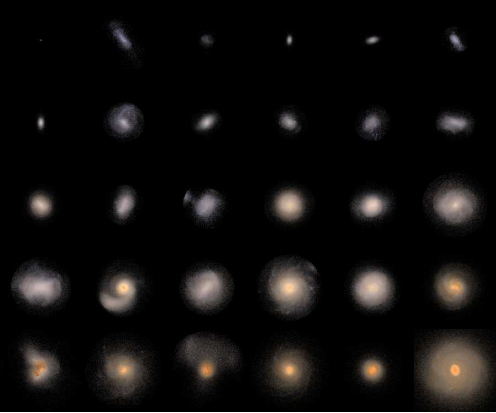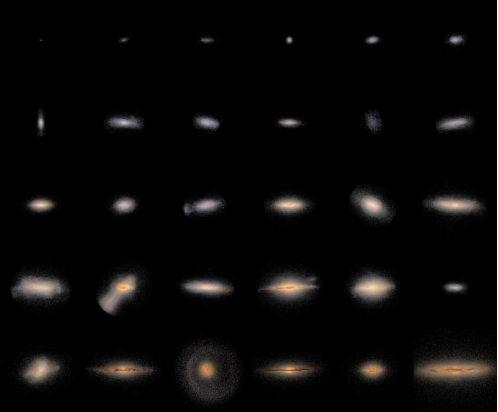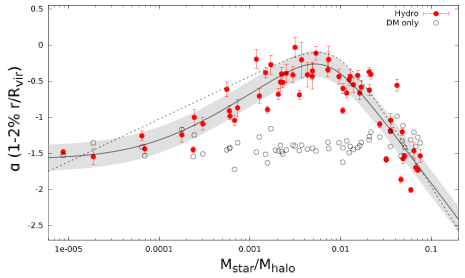The CAS-MPA partner group at Purple Mountain Observatory, led by Dr. Xi Kang and Liang Wang in PMO, had made great progress in hydro-dynamical numerical simulation of galaxy formation. The partner group at Max-Planck-Institute for Astronomy is led by Dr Andrea Maccio’. The series of papers have been accepted to the Monthly Notices of the Royal Astronomical Society (MNRAS) in UK.
The series of hydro-dynamical simulation is called ‘Numerical Investigation of a Hundred Astrophysical Objects’ (NIHAO), and it studies near 100 galaxies ranging from dwarf to Milky Way size galaxies. The simulation includes dark matter, gas cooling, star formation, stellar supernova feedback. In addition we also include the early stellar feedback which is from the stellar wind and photo-ionization from massive stars prior to their supernova explosion. Compared to other simulations, NIHAO galaxies have higher resolution and large sample. Most of NIHAO galaxies have well resolved disc structure, in better agreement with the observations.
The main results from NIHAO are: 1) Stellar feedback, including early stellar feedback and supernova feedback, can decrease the star formation efficiency in low-mass galaxies, in agreement with the observed halo mass-stellar mass relation. 2) The inner slope of dark matter halo is more round, symmetric in hydro-simulations. 3) The expansion or contraction of dark matter responding to star formation process depends on the total star formation efficiency and the size of the stellar component. 4) The circular velocity of the galaxies is decreased by the baryonic process, compared to that from pure dark matter simulation, which can explain the Too-big-to-Fail problem in the Milky Way satellite galaxies. More detail about NIHAO can be found from arxiv.org with these numbers: 1503.04818, 1503.04814, 1506.08785, 1507.03590, 1512.00453,1603.01703,1601.00967, 1602.06956


Fig.1, Left panel: face-on view of simulated NIHAO galaxies. Right panel is for edge-on view

Fig.2. The inner slope of galaxies as a function of star formation efficiency. Compared to results from pure dark matter simulation (empty circles), the inner slope in hydro-dynamical simulation depends on the star formation. Maximum expansion is reached at intermediate star formation efficiency.

Fig.3 The circular velocity profiles of NIHAO galaxies. Left: velocity profile from pure dark matter simulation. It is seen most NIHAO galaxies (blue lines) have circular velocity larger than the data (empty circles) at given radius. Right: the correspondence in hydro-dynamical simulation. The circular velocity is decreased due to baryonic feedback, leading to better agreement with the data. Our results solve the Too-big-to-Fail problem.
http://apps.webofknowledge.com/full_record.do?product=UA&search_mode=GeneralSearch&qid=1&SID=Y2RcBZZZm6oaimndbfk&page=1&doc=9
|
(Information Source: Purple Mountain Observatory, CAS) |

